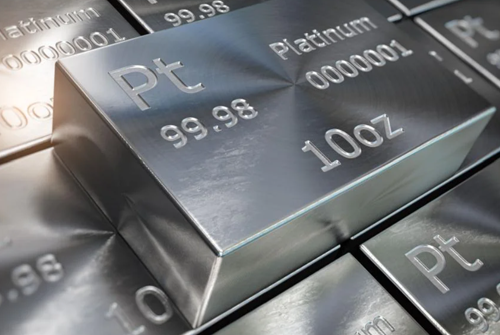
Platinum, a precious metal renowned for its rarity, durability, and industrial applications, experienced a significant decline in recent years. Today, Platinum price is $1,018 per ounce, which is almost a half of what it used to be a little over a year ago. The most recent platinum price left many investors and market observers wondering about the causes behind this sudden downturn. In this article, we will delve into the factors that contributed to the platinum crash and explore the implications for investors and the broader market.
Supply and Demand Dynamics:
One of the primary factors influencing platinum prices is the balance between supply and demand. Platinum is a relatively rare metal, with the majority of its production concentrated in South Africa, Russia, and Zimbabwe. The supply of platinum is susceptible to disruptions caused by labor strikes, mine closures, or political instability in these regions.
On the demand side, platinum has various industrial applications, including catalytic converters, jewelry, and electronics. The automotive sector, in particular, is a major consumer of platinum due to its use in emission control systems. A slowdown in automotive production or a shift towards alternative technologies can impact the demand for platinum.
In recent years, a decline in automotive sales, particularly in diesel vehicles where platinum is predominantly used, coupled with the rise of electric vehicles, has dampened the demand for platinum. This shift in the automotive industry has played a significant role in the decline of platinum prices.
Market Sentiment and Investor Behavior:
Market sentiment and investor behavior can significantly influence the price of platinum. Investor sentiment, economic outlook, and geopolitical events can create fluctuations in demand and affect investor appetite for platinum as a safe haven or speculative investment.
During times of economic uncertainty or geopolitical tensions, investors often flock to safe-haven assets such as gold or silver. This flight to safety can divert attention away from platinum, causing a decline in demand and subsequently lower prices. Additionally, changes in interest rates and currency exchange rates can impact the attractiveness of platinum as an investment, further influencing its market value.
Relationship with Gold and Other Precious Metals:
Platinum is often considered a sister metal to gold and silver, and their prices are interconnected to some extent. While platinum shares similarities with these metals as a store of value and safe-haven asset, its industrial demand sets it apart. Unlike gold, which is primarily influenced by investor sentiment and jewelry demand, platinum’s value is significantly tied to its industrial applications.
However, changes in gold prices can indirectly impact platinum prices. During periods of economic uncertainty, when investors turn to gold, platinum may experience a decline as demand weakens. Additionally, if gold prices surge significantly higher relative to platinum, it can make platinum less attractive to investors, leading to a decline in demand.
Exchange-Traded Funds (ETFs) and Investment Vehicles:
The emergence of exchange-traded funds (ETFs) and other investment vehicles has made it easier for investors to gain exposure to platinum. These investment instruments allow investors to buy and sell platinum without physically owning the metal. Fluctuations in the holdings and trading activity of platinum ETFs can influence the supply and demand dynamics of platinum.
When investors sell off their platinum ETF holdings or reduce their exposure to the metal, it can put downward pressure on platinum prices. Similarly, if market participants perceive a lack of interest in platinum ETFs, it can negatively impact market sentiment and contribute to a decline in prices.
Conclusion:
The crash in platinum prices can be attributed to a combination of factors, including supply and demand dynamics, shifts in industrial and automotive sectors, investor sentiment, and the relationship with other precious metals. The slowdown in the automotive industry, particularly in diesel vehicles, coupled with the rise of electric vehicles, has dampened the demand for platinum. Changes in investor behavior, economic outlook, and geopolitical events also play a significant role in shaping platinum prices.
As with any market, understanding the underlying factors and conducting thorough research is crucial for investors. The platinum market can be influenced by a range of variables, and keeping abreast of industry developments and market trends can help investors make informed decisions.